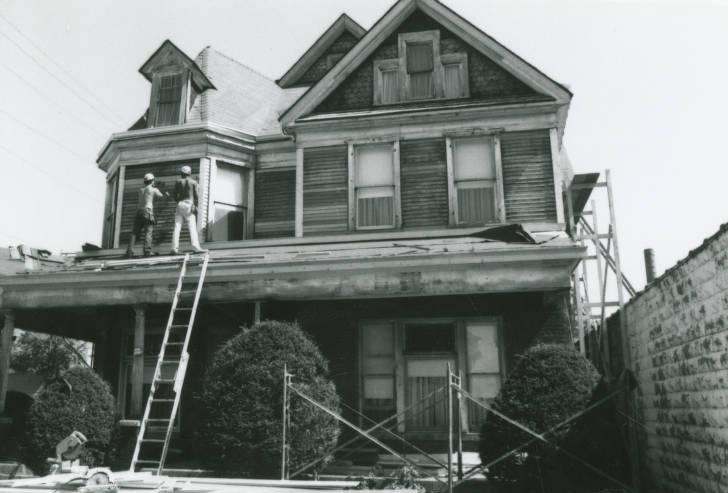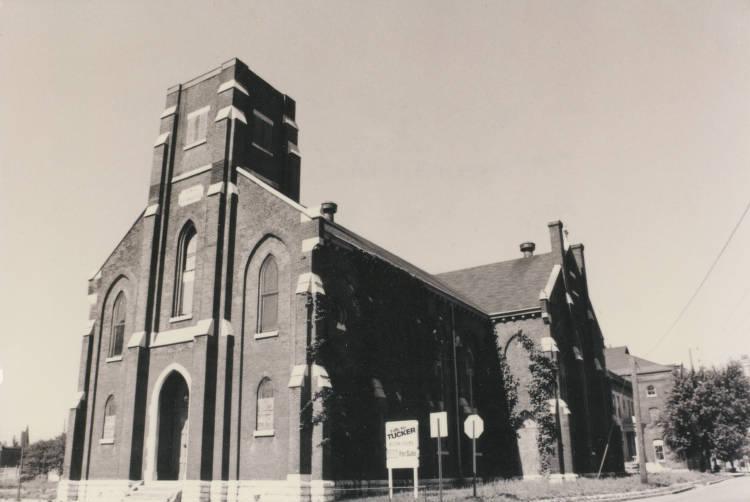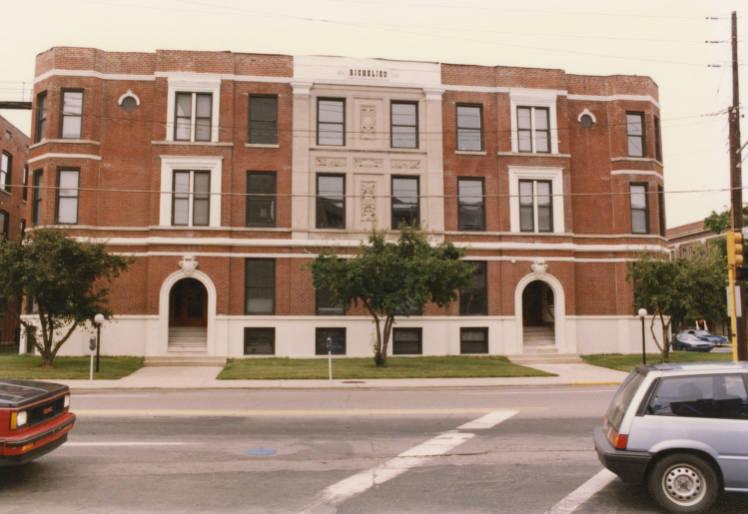Located on the northeastside of downtown Indianapolis, bounded by I-65, College Avenue, East Street, and North Street, Chatham Arch is marked by its Civil War-style homes and buoyed by the 21st century economic success of . While the addition of interstate systems through the area destabilized the neighborhood during the mid-20th century, Chatham Arch has regained its status as a prosperous spot to live in the Circle City.

In the 1830s, John Wood Sr. became one of the earliest individuals to plat land within the area. Appreciating the Old English word for homestead, Wood dubbed one of the neighborhood’s roads as Chatham Street (later Park Avenue). It was not until well over a century later, in the 1980s, that the Chatham Arch name was created after neighborhood groups combined the names of Chatham Street and Arch Street.
Fully platted between 1836 and 1871, the 54.5-acre area originated as a thriving, Civil War-era, working-class community with Queen Anne (characterized by asymmetrical façades, towers, porches, and overhanging eaves), Gothic Revival (characterized by pointed arches, steeply pitched roofs, and delicate wood trim), and Stick Style (built with an imitation half-timbered effect) cottages. The houses dotted a somewhat irregular street plan, as Mass Ave cuts through the neighborhood to the south and both East Street and College Avenue begin to twist near the northern border. Many of these cottages were homes to the families of local construction workers and German immigrants. Meanwhile, along Broadway and East streets, Italianate houses (featuring two-to-three stories, low-pitched roofs, overhanging eaves, tall narrow windows, decorative brackets, and wrap-around porches) were grander, reflecting the prestige of the businessmen who owned them.
Chatham Arch was never exclusively residential. A five-acre railroad depot was in operation during the early years of the neighborhood’s development. Along Massachusetts Avenue, shops and light industry sprang up along the Citizens Avenue Railroad, while groceries and drug stores sprouted on busy corners. Following the turn of the century, apartments and commercial firms began to move in as well. For instance, in 1922, the opened the first building in its seven-building complex that would go between North Street and Massachusetts Avenue.
The Chatham Arch neighborhood has long been home to numerous religious denominations, including Allen Chapel AME Church which made its home at 637 E. 11th Street in 1866. Allen Chapel is one of the oldest Black congregations in Indianapolis and is a crucial piece of the history of African American settlement in Indianapolis, with the church offering both classes and a center point around which African American families could find housing. Elsewhere in the area, the Roman Catholic Church took root from 1880-1949 closer to Mass Ave at St. Joseph’s Parish. Other faith traditions include the German Reformed faith at Zion Evangelical Church and the First United Brethren Church (whose building was torn down for the second time in 1997).

Chatham Arch experienced decline in the 1950s and 1960s. Many cottages and buildings were razed, and larger homes were subdivided into apartments. Construction of I-65 cut a swath through the neighborhood, now forming the area’s northern border and encroaching from the east as well. The area also became isolated from its northern and eastern neighbors.
Efforts to revitalize the neighborhood began with its inclusion on the National Register of Historic Places in 1980, and on October 18, 1981, the Chatham Arch Neighborhood Association (CANA) came together to organize beautification projects and social events. Since its National Register designation, efforts to preserve the area’s heritage and architecture have taken two different forms, preservation and commercial development through reuse. In 1982, the neighborhood was named one of Indianapolis’s protected , and plans for Chatham Arch’s continued preservation were filed under the Chatham-Arch Historic Area Preservation Plan. During the 1990s, Chatham Arch became one of the fastest-growing historic neighborhoods in the city. Many cottages were restored, and sites such as the Real Silk Company were adapted to condominiums and offices. Popular residential and commercial sites began popping up, like the Chatham Arch Community Garden, The Livery, The District Theatre, and the Indianapolis Firefighters Museum.

The Chatham Arch Neighborhood Foundation was organized in September 2000 to help fund larger ventures for the neighborhood. The Foundation and the Chatham Arch Neighborhood Association have collaborated on numerous improvement projects, such as historic streetlights and Chatham Commons Park.
Revitalization of the area resulted in a decline of 15 years in Chatham Arch’s mean resident age at the same time that the neighborhood’s financial value skyrocketed. Nearly 25 years after being designated a Historic Preservation Area, the region was folded into the Chatham-Arch & Massachusetts Avenue Historic Area Preservation Plan in 2006.
Aiming to protect the neighborhood as well as the surrounding commercial and industrial sites, this new plan combined Chatham Arch with Mass Ave and the locations east of College Avenue. The , which opened in 2013, runs through Chatham Arch, making it another neighborhood asset.
Chatham Arch maintains its status as a neighborhood with a clear residential focus in its northern half and a clear commercial focus (via Mass Ave) in its southern half. The area’s residential section still has its historic cottages but also includes a variety of other newer in-fill housing options like duplexes and apartments.

Is this your community?
Do you have photos or stories?
Contribute to this page by emailing us your suggestions.